Since the temperatures are already really warm, you can slowly start to think about the summer holidays now… and of course of diving in warm, crystal clear water. I would therefore like to take this opportunity to introduce you to the single tank configuration DIR-style today.
In many peoples’ minds, they still stubbornly hold onto the idea that for DIR diving, a dry suit, large double bottle and all sorts of other diving equipment is necessary. The fact is, that there is another way that I want to show you below:
Regulator Configuration
The basis for the regulator configuration in this variant is a 1st stage. Here, in the picture, an example of a Tec3 1st stage from Apeks can be seen. Further down in the report there are two further examples of different 1st Stages.
Compared to the regulator configuration with the two 1st stages, in regards to the hose guide, nothing changes. You still have all of the hoses in exactly the same place as in the double tank configuration. The primary regulator and the backup regulator both come from the right-hand side. On the left-hand side the pressure gauge and inflator are held.
The Tank
When I write about a single tank configuration, then I also mean a single tank of course. Here in the picture is an example of a mono 10L.?Commonly found in holiday regions, M10, M12, M15 or possibly even in countries which use aluminium bottles the 80cuft (80 cubic feet equivalent, 11.1L) is preferred.
As you may already know, the hose guide has not changed.
The Single Tank Wing
As in any class DIR configuration, the back plate is, of course, the central element. In our “mono-case” a mono wing and a single tank adapter is screwed onto the back plate.
The mono wing has a special, narrower section and adjusts itself better to individual bottles. If you were to dive with this configuration with a wing that is designed for double tanks, you would maybe have some problems due to the size of the double tank wing!
The single tank adapter essentially consists of a metal bar which is screwed onto the back plate. Onto this rail, two tank straps are then usually fixed, onto which you can fix the bottle.
The Single Tank Configuration
The single tank configuration can be seen on the picture above!
In comparison to a double tank configuration, your hose guide has not changed. You can use your back plate as usual. Only the sections of the wings and the bottle have been adapted. Primary and backup lights can also be used by being attached to the harness on the back plate.
Additional equipment such as weight pockets that can be pushed onto the harness. Also large pockets for small items such as buoys, spool, etc. are also available to buy.
As you can see, nothing fundamental has changed in the configuration. For holiday dives in the recreational diving area, this configuration is definitely one of the most pleasant and best-fitting, which can be found.
Various Regulator Configurations for single tanks
At the beginning of the article I gave you the regulator configuration with a Tec3 1st stage from Apeks. Below, I would like to introduce you to two other ways in which you can configure your regulator to deal with different 1st Stages.
1st Stage Apeks XTX100
The picture above shows a mono configuration with a 1st stage Apeks XTX100. In contrast to the first Tec3 1st Stage, the hose does not run straight down, but out to the left and right. Another option with this configuration would be to put the 1st stage on its head so that the leads would be directed downwards a little further.
1st Stage Apeks XTX50 with fifth port
The next configuration that I would like to introduce is a 1st Stage Apeks XTX50 (5th port). This 1st Stage has a fifth medium-pressure port, which sits at the “head” of the stage. Here, in this picture, this MP-port (medium pressure) is connected to the long hose. This fifth outlet allows the long hose to go straight down. Backup regulator, pressure gauge and inflator each appear to the left and right.
I hope I could give you an idea that DIR diving is not only about large double bottles, dry suits and tons of diving equipment! The presented single tank configuration is ideal for holidays in warm regions and reduces the weight of the diving luggage quite a bit for air travel. It only remains for me to wish you a great holiday!
And in this way, thanks to Mike and Fabian who provided a few images for this blog post.


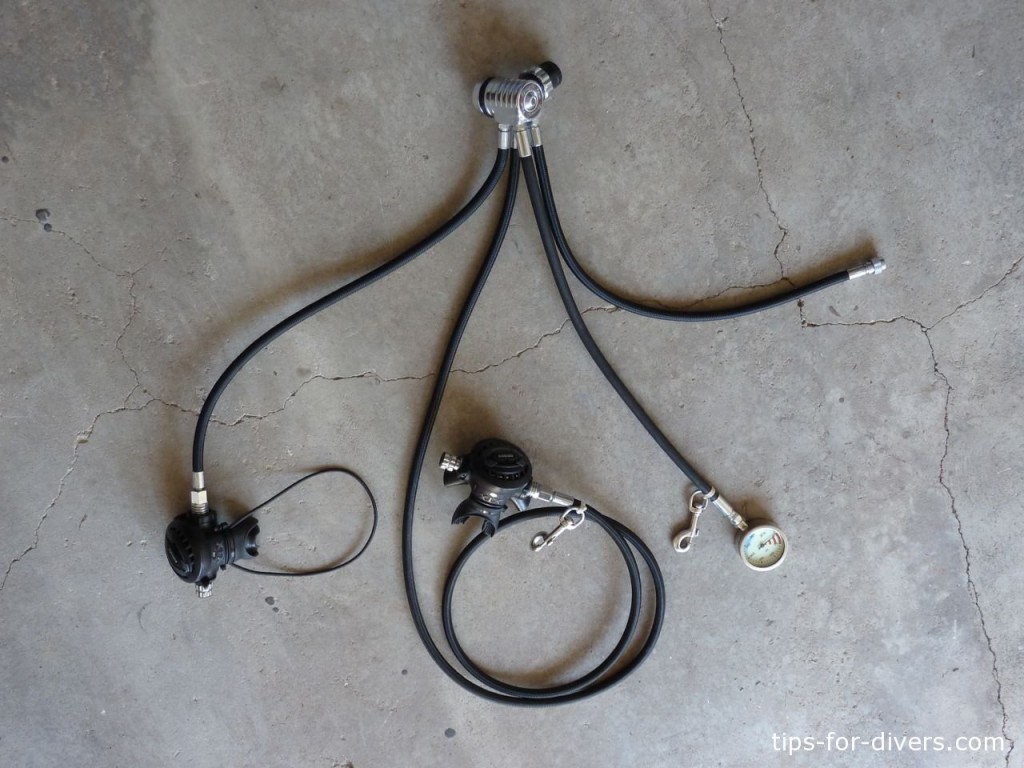
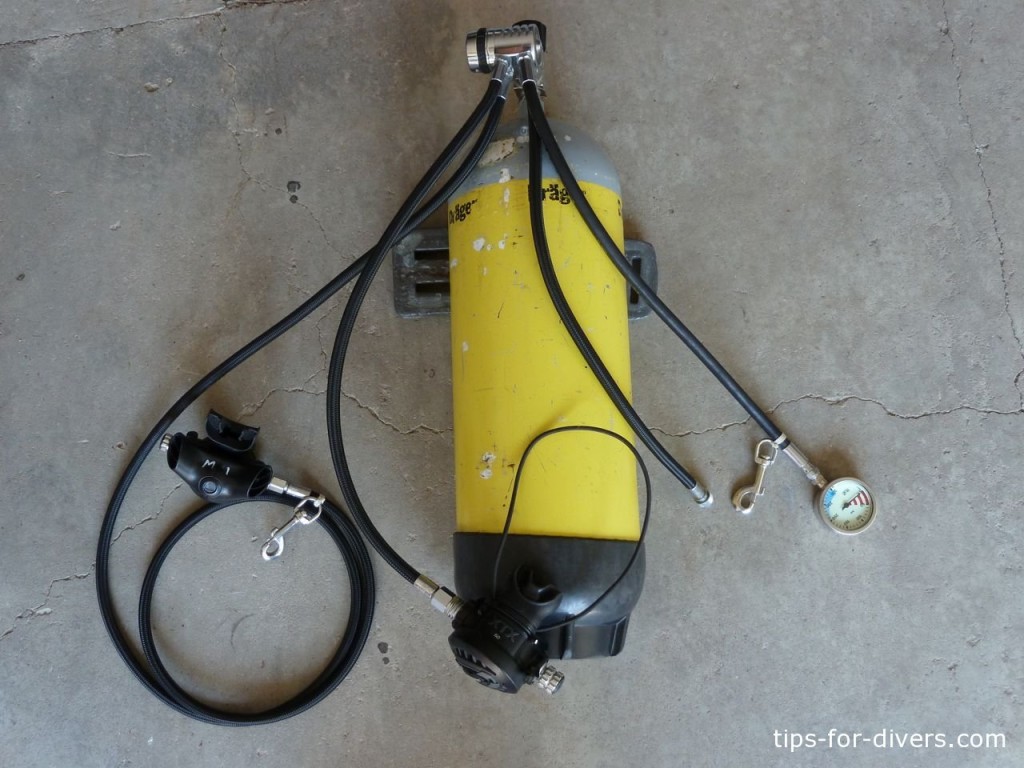
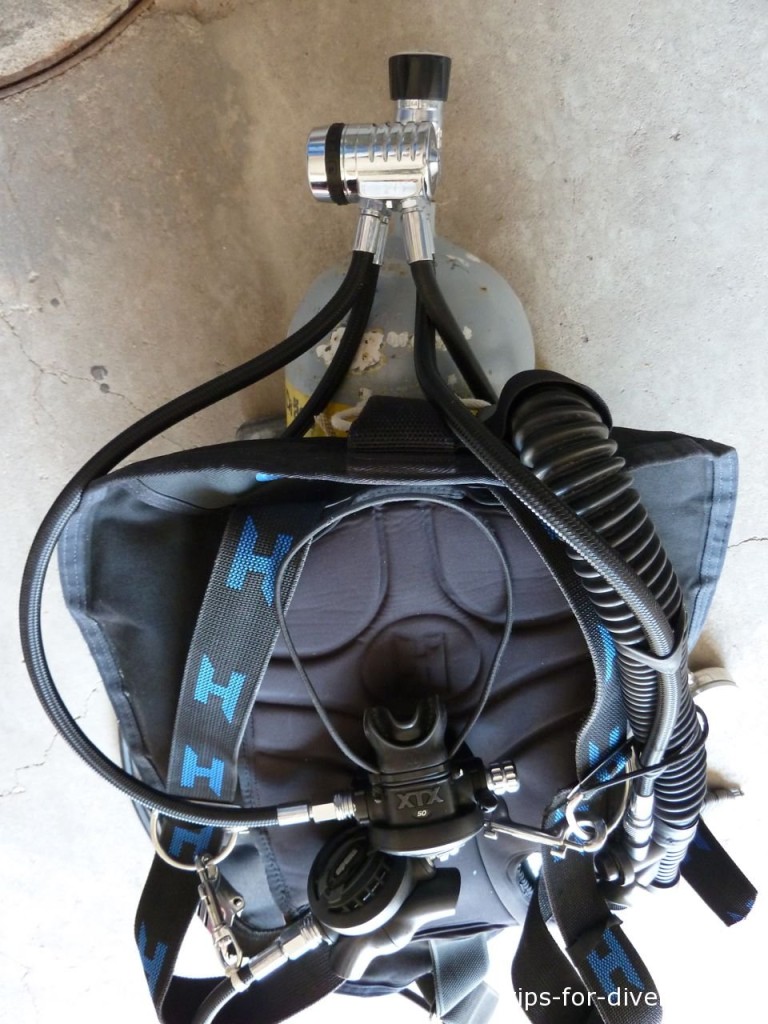
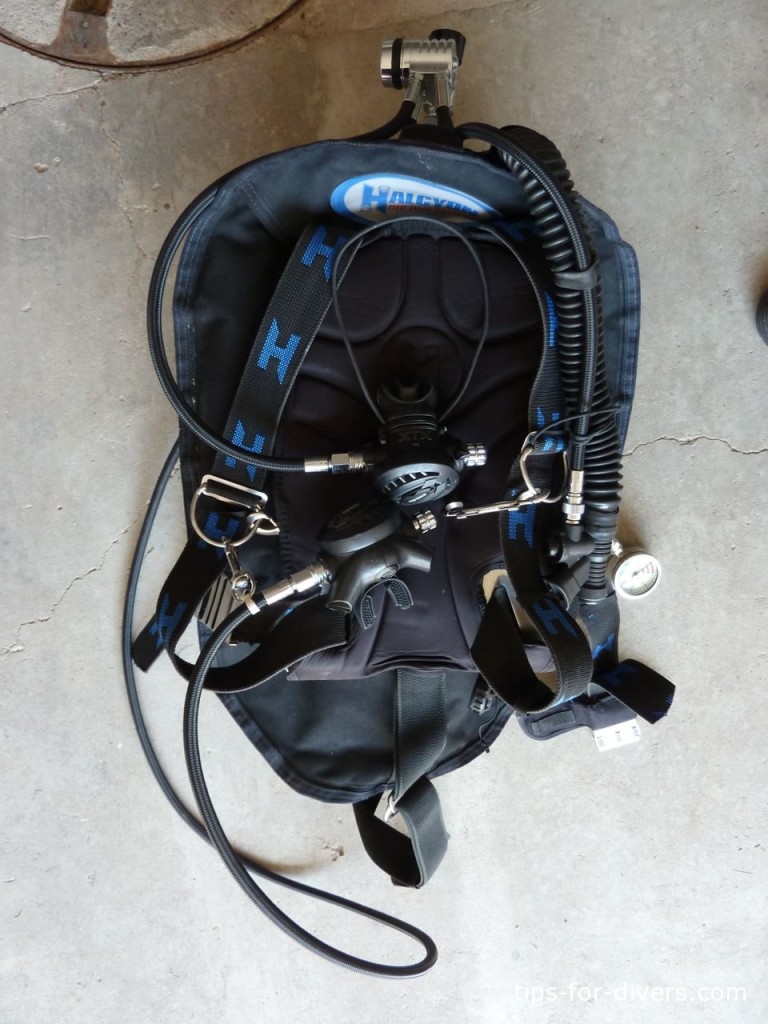
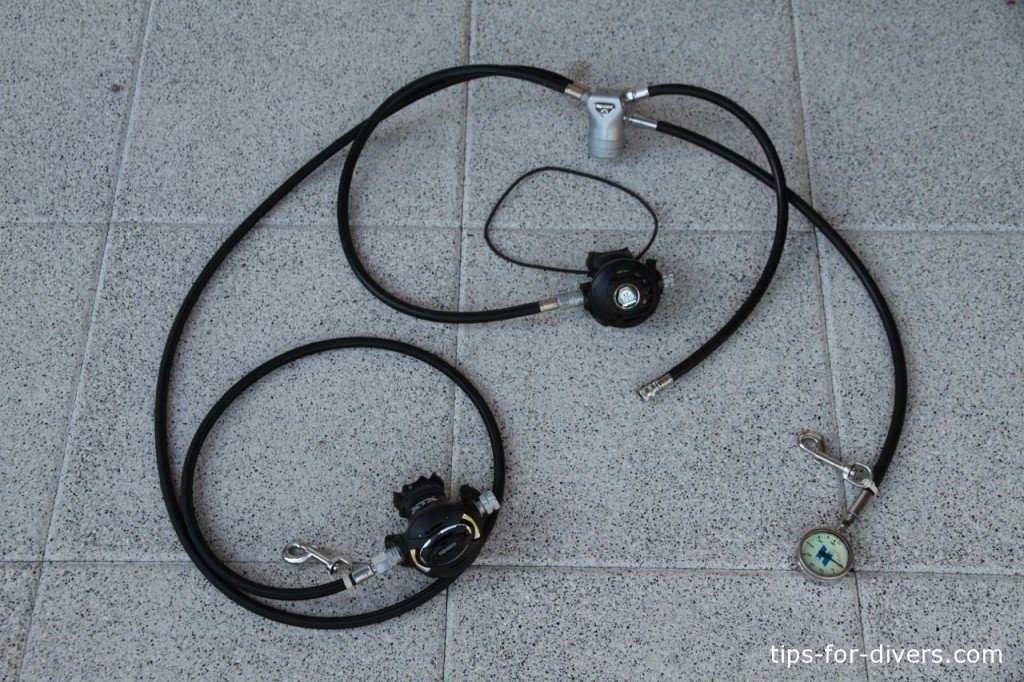
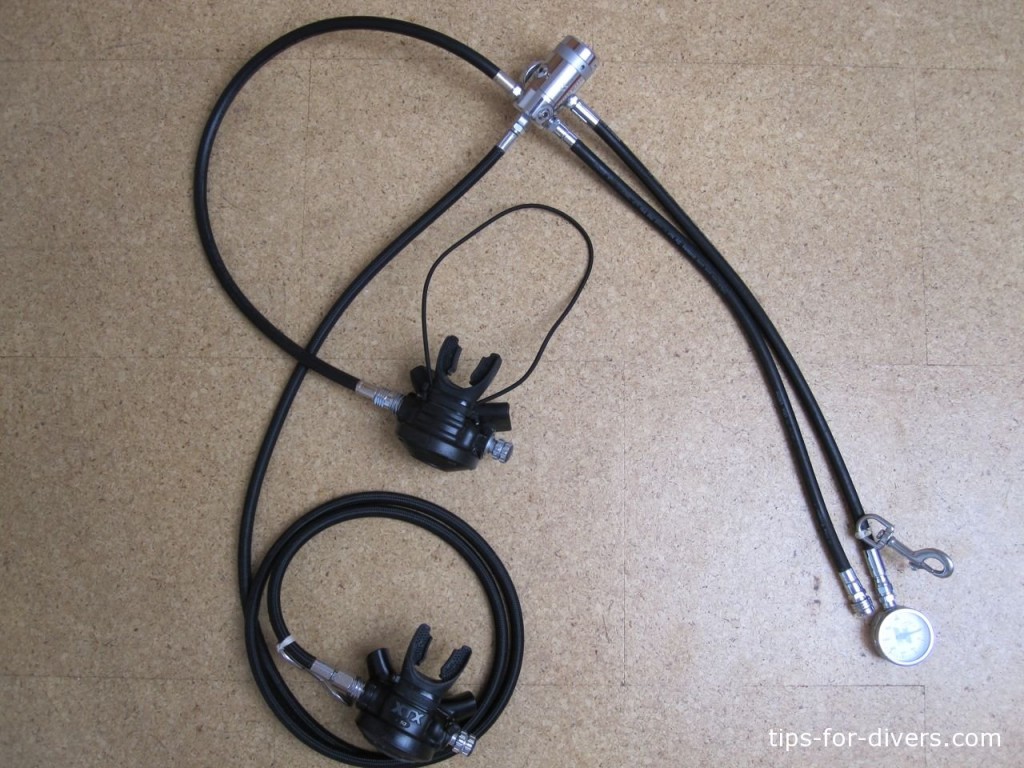
6 Comments
Leave a reply →